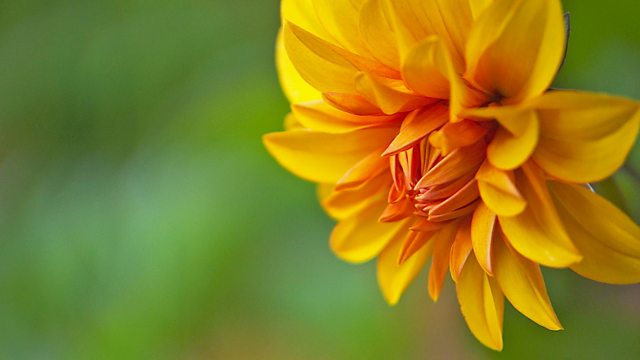
Episode 17
As the summer gathers pace and the weather starts to warm up, drought-tolerant plants really hit their stride. Monty Don shares some of his favourites from Longmeadow, and garden designer Adam Frost shows us how to build a gravel garden from scratch.
Last on
Clips
-
![]()
Adam’s gravel garden
Duration: 05:51
-
![]()
Wollerton Old Hall
Duration: 06:11
Formal garden visited
Wollerton Old Hall
Garden
Wollerton
Market Drayton
TF9 3NA
(www.wollertonoldhallgarden.com)
Plant combos

As Carol discovered, Wollerton Old Hall has some truly spectacular planting combinations. The owner, Lesley Jenkins, and Head Gardener, Andrew Humphris, have worked hard over the years to achieve this effect. Here are their top five recommendations.
Penstemon 'Raven', Penstemon 'Snow Storm', Plectranthus argentatus, Rosa 'Wollerton Old Hall', Salvia nemorosa 'Caradonna' and Veronicastrum virginicum 'Fascination'
The large, silver leaves of the plectranthus provide the perfect foil for both the penstemons at the front of the bed, whilst the upright spikes of the purple-blue salvia, also near the front, tie in with the lavender-coloured veronicastrum right at the back. In the middle, the creamy-yellow rose links the whole thing together. It has a delicious scent too.
Delphinium 'Alice Artindale', Phlox paniculata ‘Blue Paradise', Phlox paniculata 'Monica Lynden-Bell' and Salvia 'Penny's Smile'
The tall, electric-blue spikes of the delphinium are surrounded by the pale pink and ��purple-blue phloxes. Below, is the mid-pink of the salvia. A lovely combination in shades of blue and pink.
Achillea filipendulina 'Gold Plate', Ensete ventricosum 'Maurelii', Helenium 'Moerheim Beauty’, Kniphofia 'Wol's Red Seedling', Miscanthus sinensis 'Zebrinus', Salvia 'Nachtvlinder' and Trifolium ochroleuca
The tall miscanthus with yellow banding on its leaves combines beautifully with the flat-headed, yellow flowers of the achillea. The dark red of the helenium in the middle and the rest of the scheme are set off by the large leaves of the banana which are green tinged red. In the foreground, the salvia and Trifolium add contrast, along with the pale red Kniphofia.
Clematis 'Mary Rose', Miscanthus sinensis ' Morning Light', Rosa Lady Emma Hamilton and Salvia meyeri ��
The delicious rose with peachy-orange flowers, a fruity fragrance and purple-tinged leaves looks great on its own, but when it is combined with the very dark flowered clematis and white striped miscanthus, it looks even more stunning! This combination also sets off the pale blue flowers of the salvia at the back.
Dahlia 'Brackenridge Ballerina', Dahlia 'Admiral Rawlings', Salvia involucrata 'Bethellii', Verbena bonariensis and Veronicastrum virginicum ‘A�����ܳ�’
For a bold statement, this combination is hard to beat. The burgundy flowers of the dahlia are an impressive 9ft tall, while the pink-flowered salvia below, which flowers non-stop until the frosts, is a good 6-7ft tall. The upright spikes of the white veronicastrum add a wonderful vertical accent, while the wands of pinky-purple flowers of the tall verbena make an impressive sight.
Jobs for the weekend: Make comfrey feed
Comfrey makes an ideal plant food and is especially good for promoting flowers and fruit. Harvest the leaves from the base of established plants, chop them up and pack them tightly into a bucket. Fill the bucket with water and put to one side. The leaves will break down releasing a smelly brown liquid - you may want to put a lid on your container! In a few weeks, you can strain it and use the concentrate to make a foliar feed.
(www.gardenorganic.org.uk)
Jobs for the weekend: Keep sowing lettuce
To have a regular supply of lettuce, don’t forget to keep on sowing throughout the summer. Little and often is best. Regardless of whether you’re sowing into seed trays or directly in the soil, sprinkle the seeds thinly and keep them watered. And if you sow now, they should be ready for harvesting at the end of August.
(www.rhs.org.uk)
Jobs for the weekend: Deadhead roses
With repeat-flowering roses, it’s worth deadheading them on a regular basis. Cut back to the next leaf. This will prevent the plant from forming seeds at the expense of further growth and flower development.
(www.rhs.org.uk)
Credits
| Role | Contributor |
|---|---|
| Presenter | Monty Don |
| Presenter | Adam Frost |
| Series Producer | Chloe Rawlings |
| Series Editor | Liz Rumbold |
Broadcasts
- Fri 10 Jul 2015 21:00
- Sat 11 Jul 2015 17:25
- Sun 12 Jul 2015 08:30
- Fri 17 Jul 2015 08:00
- Sun 4 Mar 2018 08:00


